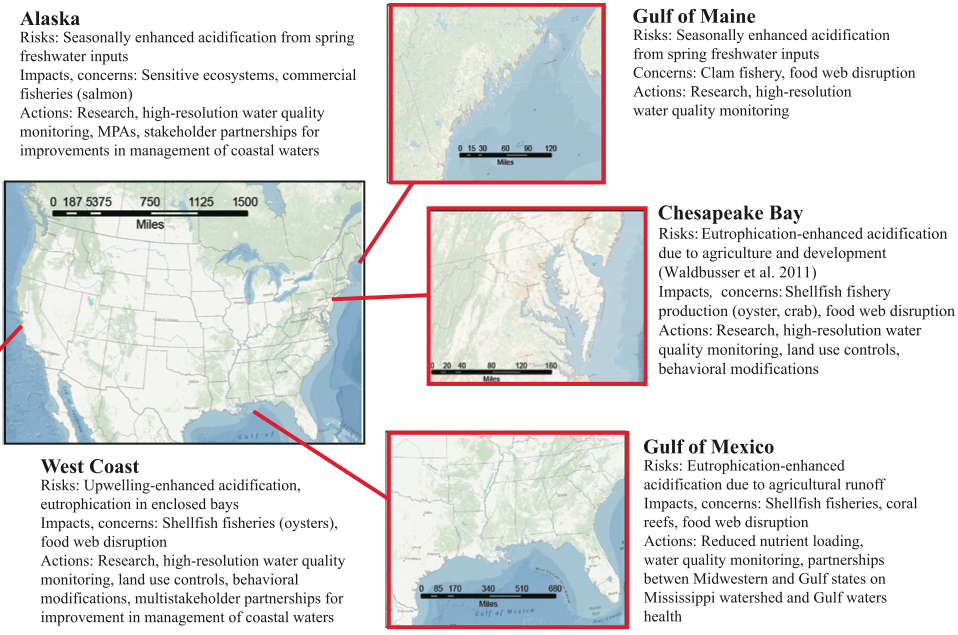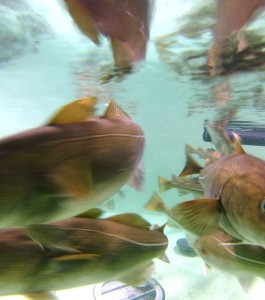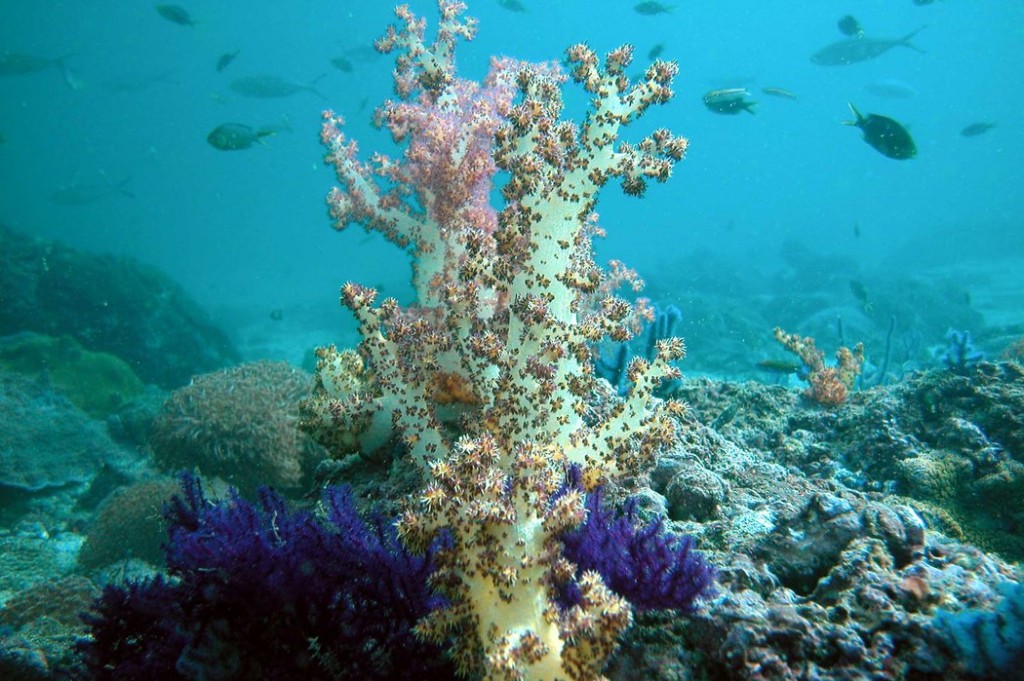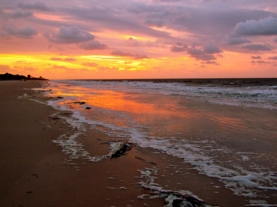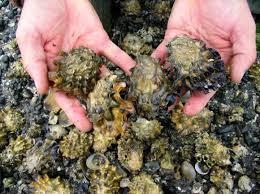
Rep. Mick Devin, left, with Dr. Scott Doney, chairman, Department of the Marine Chemistry & Geochemistry and Director WHOI Ocean and Climate Change Institute. Courtesy of Stefanie Veneziano
The future of Maine’s coastal economy is uncertain as the state’s most valuable fisheries are at risk. Scientists, legislators and others concerned with coastal ecosystems discussed the threats of changing ocean chemistry before the first meeting of the new ocean acidification commission on Friday at the University of Maine Darling Marine Center in Walpole.
Ten scientists addressed the different factors causing ocean acidification and how it affects marine ecosystems during the morning session of the meeting. If left unchecked, ocean acidification could cause major losses to shellfisheries like clams, oysters, lobsters, shrimp and sea urchins and put at risk thousands of jobs and billions of dollars to the state’s economy.
“Ocean acidification is happening all over the world but nowhere are its potential impacts greater than in Maine,” said Dr. Bob Steneck, a professor at the School of Marine Sciences and Pew Fellow in Marine Conservation. “Our coastal ecosystem and marine resources are most at risk.”
Steneck discussed how ocean acidification may be especially problematic for Maine’s marine resources and how certain factors could locally reduce its effects. He pointed out that over 75 percent of the value of Maine’s marine resources comes from animals with limestone shells, such as lobsters, crabs, sea urchins, clams, oysters, scallops and mussels.
As Maine has the highest lobster population density in the world, the lobster industry is also at risk of ocean acidification’s effects.
Dr. Rick Wahle from the Darling Marine Center addressed how ocean acidification might affect the lobster industry, one of Maine’s major economic drivers. Wahle said that the future of Maine’s coastal economy is far from certain because different species respond to chemistry changes.
“In the wake of depleted fisheries over the past few decades, Maine’s coastal economy is now perilously dependent on the lobster fishery,” said Wahle. “We need to understand ocean acidification in the context of the other stressors facing our fisheries in the coming decades.”
The Commission to Study the Effects of Coastal and Ocean Acidification on Commercially Harvested and Grown Species will study the negative effects of ocean acidification on the ecosystem and major inshore shellfisheries and make recommendations to the Legislature on how to address the threat.
Rep. Mick Devin, D-Newcastle, introduced the law to establish the commission, which is the first of its kind on the East Coast.
“I’m glad that we’re moving in the direction of addressing this issue,” said Devin, who works as a hatchery manager at the Darling Marine Center. “Ocean acidification is a major threat to thousands of jobs in our state and the marine economy.”
State Sen. Chris Johnson, D-Lincoln, said that it is important for commission members to have a full understanding of the facts as they consider what Maine can do about changing ocean chemistry.
“Ocean acidification is a critical threat to Maine’s marine resources and coastal communities,” said Johnson, Senate co-chairman of the commission. “I am pleased that we are kicking off our meetings with briefings from nationally and internationally recognized scientists, some of whom are doing their research right here on the coast of Maine.”
Read more here


